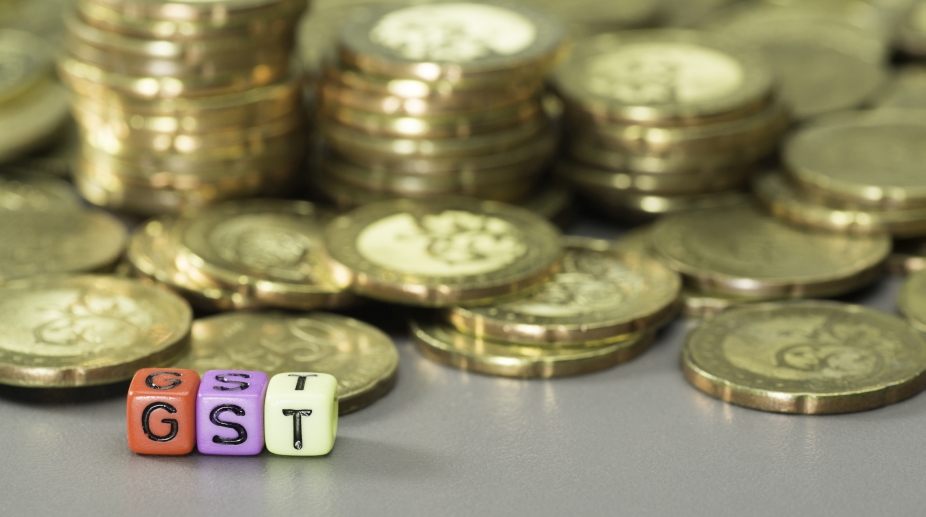The Goods and Services Tax (GST) will eventually mark the process of the country’s integration, ushering in a United States of India, so to speak. Just as on the midnight of 14-15 August, 1947, India ushered in independence from British rule with Prime Minister Jawaharlal Nehru’s stirring “tryst with destiny” speech, the same Central Hall of Parliament will resonate with, what Prime Minister Narendra Modi calls, the “historic” launch of the Goods and Services Tax on 30 June midnight.
The fervour and fanfare with which the roll out is envisaged will not just be symbolic; it signifies the country’s economic integration and in a way complements the unification of its post-princely states, accomplished 70 years ago.
Advertisement
GST will hopefully pave the way for the “one country, one tax, one market” framework. The occasion is indeed historic, cementing “the edifice of a consolidated India”, a stellar achievement of India’s celebrated iron man, Sardar Vallabhbhai Patel who, with his clear vision and perspicacity, administrative sagacity and indomitable will, had once integrated over 540 princely states, big and small, comprising two-fifths of the country.
Because of Partition, India had lost an area of 364,737 sq miles and a population of 8.15 crore. Through the integration of states, it brought in an area of almost 500,000 sq miles and a population of 8.65 crore (not including J&K). It could in a way be compared with Risorgimento ~ the consolidation of different states of the Italian peninsula into the single state of the Kingdom of Italy in 19th century (1815-1871).
The sweep and importance of integrating these diverse autonomous states with varying administrative, judicial, fiscal and monetary systems, railways and currencies, into the Union of India has seldom been grasped. Circumscribed by a large number of tariff walls, the states levied their own taxes, including excise and inter-state customs duties. The maritime states of Kathiawar levied customs duties of their own.
Abolition of internal customs duties following the integration of states with the Union paved the way for freedom of trade in the country. On 1 April 1950 (13 April in case of PEPSU) the Central government assumed direct administration of the Railways, Post and Telegraphs, audit and accounts, all departments of federal revenue and currency, coinage and mints of the states and the Union of states.
As Sardar Patel remarked, “The great ideal of geographical, political and economic unification of India had remained a distant dream for centuries”. The task for the fledgling government at independence involved “toils and anxieties” in persuading, cajoling, and threatening the “royal” rulers of states which, constitutionally, were not a part of British India. Mired in mutual jealousies and conflicts, many among them were wayward and narcissistic, were unpredictable and unreliable.
Article 301 of the Constitution aimed at India functioning as one single economic unit without barriers, promoting free flow of trade and commerce through the territory of India. But, for 70 long years, post-independence, the country has indeed been a fiscally ‘disunited union of states’.
Each of India’s 29 states taxed goods, which move across their borders, at different rates. The central government levied indirect taxes in the form of union excise, import duty, and service tax whereas the state governments levied sales tax / VAT, motor vehicles tax, and passenger and goods tax, etc.
India took 60 years to effect a complete switchover from single-point to multi-point taxation, and is now due to move within a period of ten years from VAT to GST.
Considering the cascading effect of the country’s panoply of complex, inefficient and multiple taxes and user charges, the National Council of Applied Economic Research in its Fiscal Issues and Allocative Efficiency, 2012 found that the transport pricing system, as an example, was a result of multiple taxes and user charges established at different points of time.
Dr Amresh Bagchi in his 2004 report explains how the states ‘export’ taxes via CST and under-cut each other in sales tax rates to attract trade and industry; in some states, products like automobiles were taxed at the same low rates as cereals!
As the Economic Survey, 2016-17 explains, India’s internal trade is about 1.7 times its international trade, and the structure of domestic taxes as well as area-based tax exemptions might actually hinder economic activity towards more internal trade. GST will eliminate the distortions leading to normalization of internal trade.
A crucial element in an efficacious GST framework is its potential contribution towards simplifying documentation, e.g., standardized invoice, integration of export-import goods documentation with Customs ICEGATE, accelerating it across the country with the help of IT backbone. The GST Network (GSTN)’s audit trail of the movement of goods across the state boundaries will lead to optimisation of delivery schedules and operational costs.
Besides facilitating seamless inter-state flow of goods, rationalization of paper work for road transporters and reduction in delivery time would lead to reduction in distribution costs.
Together with revamped road networks and extensive access-controlled expressways with Intelligent Transportation System on the anvil, GST presents an opportunity for industry players to transform the production-distribution infrastructure.
The current sub-optimal scattered and fragmented warehouses would yield place to strategically located large logistics parks conducive to economies of scale, efficient use of multi-modal transport, and availability of value added services under one roof. Certainty of tax and better compliance would attract interest from international logistic players through FDI, JVs or acquisitions, thus propelling Indian logistics industry to global standard and competitiveness.
A general GST framework now spreads to over a hundred countries worldwide. France was the first country to implement GST in 1954. The tax rates varying from 5 per cent in Taiwan, 6 per cent in Malaysia, 7 per cent in Singapore to 13-15 per cent in Canada, 25 per cent in Denmark, the peak rate in New Zealand touching 15 per cent, the countries have been adjusting their tax structures. For example, France reduced its standard 20 per cent to 5-10 per cent and the UK, again, from standard 20 per cent to 5 per cent.
Just as the countries of Europe, after World War II, had forged a common market, tearing asunder inter-country customs barriers and other check-posts, GST holds out the hope to usher in a United States of India. The Republic unified through the indirect tax law, being enacted now, will in a way be analogous to the 1833 Zollverein, German Customs Union, forged as a coalition of German states to overcome hundreds of customs barriers where shipments were inspected.
Even though Napolean reduced the number of German states from 300 to 40 at the beginning of the 19th century, those that remained were isolated from each other by their own customs systems. To start with, Prussia abolished all internal duties and adopted an external tariff in 1818.
Analysing the cost of not completing the European Community’s internal market integration, the Paulo Cecchini Report ~ The European Challenge, 1992 ~ concluded that the border and associated administrative procedures cost 1.8 per cent of the value of goods traded within the Community, that the integration process could result in 4.5 per cent increase in GDP over six years, in addition to consumer prices declining to
the extent of 6 per cent. The European integration, which commenced with the 1986 Single European Act and the 1992 Maastricht Treaty, endowed Europeans with a single market. Under the rubric of a common market, continental politicians pitched for harmonised tax bases and fiscal coordination ~ a route towards deeper integration. With GST belatedly becoming a reality, India too would hope to reap a similar harvest.
After almost relentless polemics and skirmishes over nearly 17 years, the much-awaited GST, hailed as India’s transformational indirect tax reform, will soon be a reality. Some may even wonder whether it Was it a vision or a waking dream? (John Keats)
The writer is Senior Fellow, Asian Institute of Transport Development, and former CMD, Container Corporation of India.











